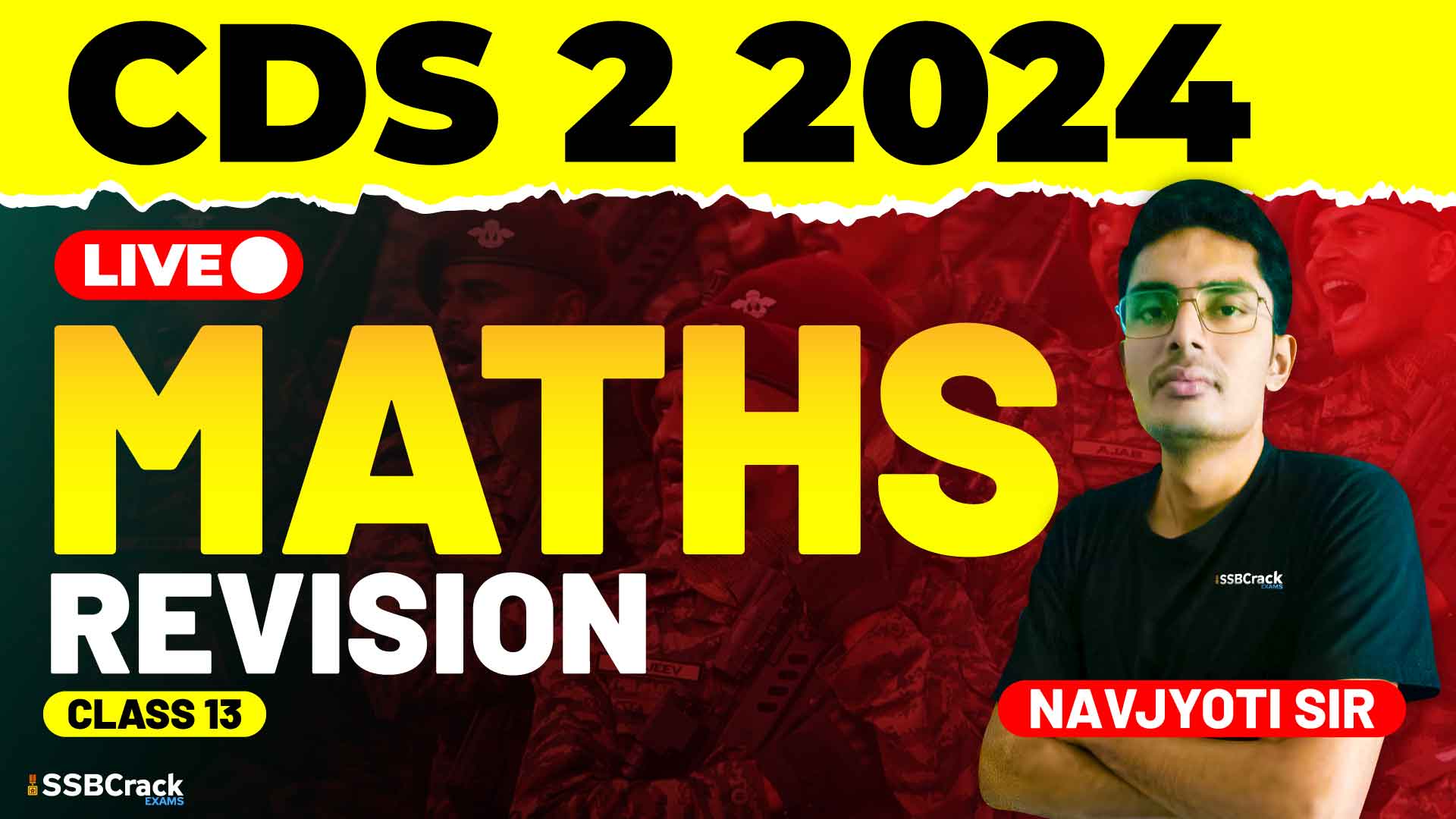The Combined Defence Services (CDS) Exam is a gateway to a prestigious career in the Indian Armed Forces, and the Elementary Mathematics paper plays a crucial role in the selection process. Among the many topics covered in this paper, Geometry and Statistics are particularly significant, as they test both logical reasoning and data interpretation skills. A recent class dedicated to preparing for the CDS exam focused on these topics through multiple-choice question (MCQ) practice. This article will provide an overview of the key concepts in Geometry and Statistics, along with strategies to effectively tackle MCQs related to these areas in the CDS exam.
Understanding Geometry in the CDS Exam
Geometry is the branch of mathematics concerned with the properties and relations of points, lines, surfaces, and solids. In the CDS exam, Geometry questions can range from basic concepts to more complex applications. Here’s what you need to focus on:
- Lines and Angles: Questions often test your understanding of the relationships between different types of angles (such as complementary, supplementary, and vertically opposite angles). Knowing how to apply theorems related to parallel lines cut by a transversal is also essential.
- Triangles: Understanding the properties of different types of triangles (equilateral, isosceles, and scalene) is crucial. The Pythagorean theorem, the properties of similar triangles, and the concept of congruence are frequently tested.
- Quadrilaterals and Polygons: You need to be familiar with the properties of various quadrilaterals (such as squares, rectangles, parallelograms, and trapezoids) and the formulas for calculating the interior and exterior angles of polygons.
- Circles: The properties of circles, including the relationships between radii, chords, tangents, and angles, are common in the exam. Theorems such as the angle subtended by a chord at the center and the cyclic quadrilateral theorem are particularly important.
Exploring Statistics in the CDS Exam
Statistics is the study of data collection, analysis, interpretation, and presentation. It plays a critical role in the CDS exam by testing your ability to work with data sets and understand statistical measures. The following concepts are particularly important:
- Data Interpretation: This involves analyzing data presented in various forms, such as tables, graphs, and charts. You should be able to draw conclusions from the data, identify trends, and make comparisons.
- Measures of Central Tendency: Understanding the concepts of mean, median, and mode is essential. These measures summarize a data set by identifying a central value around which the data is distributed.
Strategies for Solving MCQs in Geometry and Statistics
Success in the CDS exam requires more than just knowledge of the subject matter; it also depends on your ability to apply that knowledge effectively under exam conditions. Here are some strategies to help you tackle MCQs in Geometry and Statistics:
- Carefully Read the Question: Start by thoroughly reading each question to ensure you understand what is being asked. Pay attention to keywords and any specific details that may guide you toward the correct answer.
- Visualize the Problem: For Geometry questions, drawing a diagram or visualizing the problem can help you better understand the relationships between different elements. Even a rough sketch can provide clarity and lead you to the correct answer.
- Apply Theorems and Formulas: Memorize key theorems and formulas related to Geometry and Statistics, and practice applying them to different types of problems. For example, in Geometry, knowing the properties of triangles and circles can quickly lead you to the correct answer.
- Eliminate Incorrect Options: Use the process of elimination to narrow down the answer choices. If you can confidently rule out one or two options, your chances of selecting the correct answer increase significantly.
- Check Units and Scales: In Statistics, especially in data interpretation questions, pay close attention to the units and scales used in graphs or tables. Misinterpreting these can lead to incorrect answers.
- Practice Time Management: Time management is crucial in the CDS exam. If a question seems too time-consuming or difficult, mark it and move on. Return to it later if you have time remaining.
- Regular Practice: Consistent practice is essential for mastering both Geometry and Statistics. Working through a variety of problems will help you become familiar with the types of questions asked and the best strategies for solving them.
- Understand the Context: In Statistics, especially in data interpretation and probability questions, understanding the context is key. Ensure that you fully comprehend what the data represents before attempting to solve the problem.
Conclusion
Geometry and Statistics are integral components of the Elementary Mathematics paper in the CDS exam. A solid understanding of these topics, combined with strategic problem-solving skills, is crucial for success. The recent revision class on these topics emphasized the importance of practicing MCQs, visualizing geometric problems, and carefully interpreting statistical data.
By focusing on the key concepts outlined in this article and applying the strategies provided, you can enhance your performance in the CDS exam. Remember, consistent practice and a clear understanding of the material are the keys to mastering Geometry and Statistics. With diligent preparation, you’ll be well-equipped to tackle these topics and succeed in the exam.



















